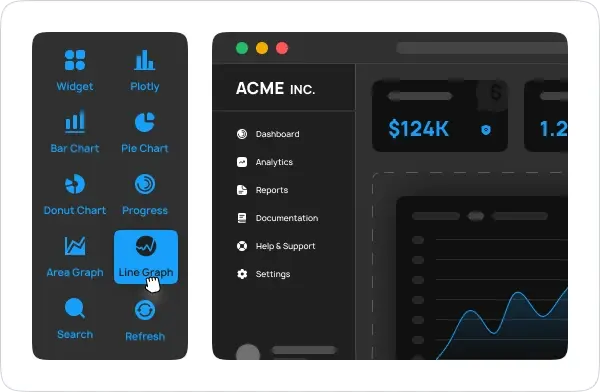

Implementing self-service operations for internal developer teams
Software developers need tools, documentation, resources, and support to build, deploy, and manage software applications efficiently. Reliance on external teams and dependencies often slows development down and hinders optimal results. Developer self-service offers a solution to these challenges, empowering developers to work more autonomously.
Importance of Developer Self-Service
Before diving into the practical aspects, it’s crucial to understand why developer self-service is essential. Reducing dependencies and streamlining processes can lead to significant improvements in productivity and innovation. Here’s a closer look at the benefits:
- Empowerment: Developers gain control over their work with access to all necessary tools and resources.
- Efficiency: Reduces dependency on external teams, accelerating the development process.
- Increased Productivity: Streamlines workflow with a centralized platform of tools and services.
- Innovation: Encourages experimentation and new techniques without waiting for external approvals.
- Collaboration: Fosters knowledge-sharing and community-building among developers.
Read also: Customer Self-Service Portals – Why do you need them?
Addressing Friction between DevOps and Developers
The dynamic between DevOps and developers often includes inherent challenges. These challenges can create friction, affecting the efficiency and harmony of the development process. Some common issues include:
- Contrasting Priorities: Developers focus on new features, while operations prioritize stability and security, leading to conflicts over rapid changes versus stability.
- Communication Gaps: Misunderstandings due to poor communication can delay performance and efficiency.
- Inefficient Workflows: Lack of automation and manual processes cause bottlenecks, slowing down product release timelines.
- Lack of Visibility: Inadequate monitoring and visibility into software performance during production lead to uncertainties.
- Misaligned Expectations: Differing views on timelines, infrastructure needs, and resource allocation result in bottlenecks.
- Inconsistent Development Environments: Unstable or outdated environments cause compatibility issues and delays, leading to lower quality software.

Data-driven Dashboards
Explore a comprehensive set of building-blocks to drastically accelerate development of self-service tools.
Try for FREE →The Need for Developer Self-Service and Internal Developer Platforms
To overcome these challenges, internal developer platforms (IDPs) and self-service practices play a pivotal role. These platforms promote collaboration, streamline workflows, and empower developers. Here’s how:
- Better Collaboration and Communication: Centralized hubs for interaction and knowledge sharing reduce conflict and improve team understanding.
- Automation and Streamlined Workflow: Tools for automated builds, deployments, and CI/CD pipelines reduce delays and increase consistency.
- Consistent Development Environments: Standardized, pre-configured environments eliminate conflicts and improve the developer experience.
- Higher Security and Compliance: Centralized control ensures adherence to security measures and compliance with standards.
- Enhanced Innovation: Ready access to tools and resources fosters experimentation and quicker time-to-market.
Practical Steps to Implement Self-Service Operations
Implementing self-service operations involves several strategic steps. Here’s a practical guide:
- Assess Current Processes: Evaluate existing processes to identify areas where self-service can be introduced, focusing on repetitive tasks and bottlenecks.
- Select the Right Tools: Choose automation tools, self-service platforms, and monitoring solutions that align with your organization’s needs, considering scalability, ease of use, and integration capabilities.
- Design the Self-Service Portal: Create a user-friendly portal that provides easy access to resources, ensuring it is well-documented and intuitive for developers to use.
- Implement Automation: Automate repetitive tasks and workflows including setting up CI/CD pipelines, automated testing, and infrastructure provisioning.
- Train and Onboard: Conduct training sessions to familiarize developers with the new self-service operations, providing comprehensive documentation and support.
- Monitor and Optimize: Continuously monitor performance, using analytics to gather insights and make data-driven improvements, regularly updating the system based on feedback.
Popular Benefits of Internal Developer Portals
The most popular use cases for internal developer portals among customers include:
- Discoverability and Context: Creating a comprehensive software catalogue that includes all company resources enables developers to find what they need and reduces unnecessary duplication.
- Driving Organizational Standards: Using scorecards to define clear standards for production readiness, code quality, and operational performance.
- Shipping Faster to Production: Providing developer self-service capabilities that allow developers to perform routine tasks without filing tickets or waiting for other teams.
- API Governance: Enriching API metadata in the software catalogue and using scorecards to ensure API quality and compliance.
- Simplifying Kubernetes for Developers: Abstracting Kubernetes complexity and providing self-service actions for developers.
- Reducing Mean Time to Recovery (MTTR): Using the portal for incident management, providing context, and automating runbooks.
- Migrations: Ensuring services, APIs, and packages use the most up-to-date versions.
- Engineering Metrics and Insights: Creating reports and dashboards on engineering metrics, including DORA metrics.
- Optimizing and Contextualizing Cloud Costs: Associating resources with their costs in the software catalogue and driving cost reduction initiatives.
- Managing Feature Flags: Providing context and self-service actions for managing feature flags.
How Can Low-Code Help You Implement a Platform Engineering Approach?
Low-code platforms transform internal self-serve tool development, perfectly aligning with platform engineering principles. Low-code platforms offer a significant advantage in implementing a platform engineering approach by enabling rapid development and deployment of applications, supporting composable architecture, which allows developers to create reusable components quickly.
Modern low-code platforms, like DronaHQ, support composable architecture. This design pattern allows developers to create reusable components to build applications more quickly while also supporting an engineering approach that ensures these components meet the most stringent non-functional requirements like security and scalability.
For example, a team can use a low-code platform to develop a custom dashboard that integrates with CI/CD pipelines, allowing developers to monitor builds, deployments, and system health in real time without relying on DevOps specialists. This reduces operational dependencies and empowers developers to manage their workflows independently.
Furthermore, low-code tools can enforce standardized policies and guardrails, ensuring that all deployments adhere to security and compliance standards automatically. This combination of self-service and governance fosters an environment where developers can innovate rapidly while maintaining the integrity and security of the development lifecycle, making it ideal for teams of all sizes.
Example: API Downtime Management
Imagine a company that relies heavily on multiple APIs for its operations. Downtime in any of these APIs can disrupt services and affect customer satisfaction. Using a low-code platform, the company can develop a self-serve tool to manage API downtime efficiently within days and boast features such as Real-Time Monitoring Dashboard, Automated Incident Reporting, Self-Serve Recovery Actions, and Integration with Communication Tools.
Conclusion
Implementing self-service operations for internal developer teams enhances efficiency, reduces bottlenecks, and improves the overall developer experience. Leveraging automation tools, self-service portals, APIs, and comprehensive documentation empowers developers to work independently and innovate faster.
Low-code platforms like DronaHQ play a crucial role in this transition by simplifying development, enhancing collaboration, improving automation, and ensuring governance and compliance. For businesses looking to revolutionize their development operations, embracing a low-code approach can empower developers, drive innovation, and accelerate the journey towards more efficient software development processes.



